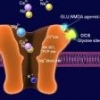
#331
Posted 13 June 2012 - 09:10 AM
#332
Posted 13 June 2012 - 03:34 PM
does this stack work right away, or does it take some time to build up and really start working?
I found that the motivation effect starts right away. But the memory portion will at least take a couple days, as you need time to remember hahahhaha. Not so much improvement for me in working memory or creativity (that fluid intelligence) I find cannabis or the racetams to be a little better for that. But my long term memory is definitely a lot stronger. Here is an example.
I was talking to a friend of mine last night. Five days ago we went and bought a little piano keyboard from someone on Kijiji. We were talking about it, reminiscing. She remembered were we went, that there was traffic and also that the woman we bought it off was Asian. Her memory may not be the best around but I remembered the woman's name, the street we parked on, what the woman was wearing, her animals and their names and why they got those names. I remembered what we ate and when we finished, what we talked about in the car, the smells and sounds of the neighborhood, how many police we passed, how long it took, ect. The list goes on forever. She was astonished and kept questioning me more and more detail.
The biggest effect I have noticed is with learning violin. I have definitely accelerated my learning of this instrument. I tried playing it before and sucked but since CILTEP along with fish oil and multi vitamin it seems i don't loose the progress that I made by practicing. I only practice about 10 min a day and have come a long way so far.
Hope this helps.
#333
Posted 13 June 2012 - 03:41 PM
#334
Posted 13 June 2012 - 08:12 PM
#335
Posted 14 June 2012 - 05:33 AM
Quercetin
http://www.ncbi.nlm....pubmed/15476679
http://www.ncbi.nlm....pubmed/18264679Myricetin inhibited PDE1-4 with IC(50) values of around 10-40 microM. The same was true for quercetin, but we rather consider that it more-selectively inhibited PDE3 and PDE4 (IC(50) of < 10 microM)
PDE4
Luteolin (Artichoke)
http://www.ncbi.nlm....pubmed/19853596
According to the Lineweaver-Burk analysis, luteolin (3-30 microM) competitively inhibited PDE1-5 activities, with K(i) values of 15.0, 6.4, 13.9, 11.1, and 9.5 microM,
http://www.ncbi.nlm....pubmed/15476679
As shown in Table 2, luteolin revealed non-selective inhibition of PDE1-5 with IC(50) values in a range of 10-20 microM
Geinstein (Coffee, Soybeans, etc)
http://www.ncbi.nlm....pubmed/15476679
As shown in Table 2, luteolin revealed non-selective inhibition of PDE1-5 with IC(50) values in a range of 10-20 microM, as did genistein except with a low potency on PDE5
http://www.ncbi.nlm....pubmed/15476679
Genistein competitively inhibited PDE1-4, with a K(i) value ranging from 4.3 to 13.7 microM.
Morus Alba (Mulberry)
http://www.ncbi.nlm....pubmed/22483586
PDE4D2, PDE4B2, PDE5A1, and PDE9A2 with the IC(50) values of 2.9, 4.5, >40, and >100 μM,
Hesperetin (Hesperidin)
Not PDE related but too cool to pass up:
http://www.ncbi.nlm....pubmed/22671307
Conclusion: It could be concluded that hesperidin might attenuate the severity of radiation-induced biochemical disorders in brain tissues.
http://www.ncbi.nlm....les/PMC3290907/
According to the Lineweaver-Burk analysis, hesperetin (10
~
100
μM) and rolipram (1
~
10
μM) competitively inhibited PDE4 activity (Figure 1), because 1/Vmax values were not significantly affected by various concentrations of hesperetin (a) or rolipram (b). Their Ki values were, respectively, calculated to be 45.6 ± 2.3 (n = 4) and 3.6 ± 1.8 (n = 5) μM (Figure 1 inset).
Icarlin
http://www.ncbi.nlm....pubmed/12646997
( So way more selective for PDE5 and not PDE4! )The IC(50) of Icariin and papaverine on PDE5 were 0.432 micromol/L and 0.680 micromol/L, respectively and those on PDE4, 73.50 micromol/L and 3.07 micromol/L, respectively. The potencies of selectivity of icariin and papaverine on PDE5 (PDE4/PDE5 of IC(50)) were 167.67 times and 4.54 times, respectively.
Biochanin (Peanuts, ChickPea, Alfalfa)
http://www.ncbi.nlm....pubmed/15476679
biochanin A more-selectively inhibited PDE4 (IC(50) of 8.5 microM) than PDE1 or PDE2
...that's enough combing through the archives for tonight.
Edited by abelard lindsay, 14 June 2012 - 06:25 AM.
#336
Posted 14 June 2012 - 08:26 AM
#337
Posted 15 June 2012 - 03:28 AM
Curcumin acts on PDE1,2 and 3 i think.
Curcumin
http://www.ncbi.nlm....pubmed/22045655
We report that curcumin inhibits PDE1-5 activities (IC(50) ≅10(-5) M), indicating that curcumin acts as a non-selective PDE inhibitor.
And let's not forget
Resveratrol
http://www.ncbi.nlm....ubmed/22304913/
Here, we report that the metabolic effects of resveratrol result from competitive inhibition of cAMP-degrading phosphodiesterases, leading to elevated cAMP levels. The resulting activation of Epac1, a cAMP effector protein, increases intracellular Ca(2+) levels and activates the CamKKβ-AMPK pathway via phospholipase C and the ryanodine receptor Ca(2+)-release channel. As a consequence, resveratrol increases NAD(+) and the activity of Sirt1. Inhibiting PDE4 with rolipram reproduces all of the metabolic benefits of resveratrol , including prevention of diet-induced obesity and an increase in mitochondrial function, physical stamina, and glucose tolerance in mice.
Now the real PDEs you want targeted are PDE4D4 and PDE4D5. In this study, PDE4D knockout mice did just as well as WT mice given Rolipram on memory tests (about 40% better)
http://www.ncbi.nlm....9568/figure/F2/
Mice deficient in PDE4D (4DKO) displayed decreases in frequency of reference memory errors (a), but not frequency of working memory errors
The graph of the difference in memory errors of WT vs PDE4KO is pretty dramatic when looked at in the long term cases. After 14 days of training, the PDE4KO mice are down to 0.1 errors while the Wild Type mice are at 0.3 in reference memory tests.
Edited by abelard lindsay, 15 June 2012 - 03:31 AM.
#338
Posted 15 June 2012 - 05:16 AM
#339
Posted 16 June 2012 - 08:53 AM
#340
Posted 18 June 2012 - 10:43 AM
interestingly i was just reading about how the 5ht2a receptor (also known for synethesia) uninhibits phototgraphic memory and automatic processing of say equations, if that receptor can be disinhibited we can activate savant like latent abilities.
The 25I-NBOMe psychedelic (which I have available, a true prototypical psychedelic, a lot of people compare it with LSD) was found to be a potent agonist at the 5-HT2A receptor, it develops a very strong tolerance that lasts 1-2 weeks but still a fairly interesting substance to play around with (most psychedelics are, but this one seems special).
Anyway, thanks for the great thread. You've all convinced me to try this stack!
#341
Posted 19 June 2012 - 12:47 AM
Yesterday I took on forskolin in the am (Solaray 3.85mg) over course of day I took about 3 artichoke extract capsules (NOW 450mg). Overall I felt a bit sharper, I was also very productive did things I'd been putting off, cleaned apt, did dishes laundry... overall productive Sunday. Decided to try and see how things worked on a work day.
Today again took 3.85 in the am and artichoke caps throughout day. Today though I was anxious. The artichoke caps seemed to make me feel less anxious for a while then anxiety would creep back. Finally around 4:30 I decided to try more forskolin - strangely when I took more of this it made me less anxious and the decrease in anxiety lasted this time also strangely however, now I felt kind of tired and stupid.
So , overall, mixed ... bit confused about these.
Anyone else have issues with the anxiety vs anxiolytic and mood elevating effects?
#342
Posted 19 June 2012 - 01:07 AM
Over the past two days, my experience with forskolin and artichoke extract are mixed.
Yesterday I took on forskolin in the am (Solaray 3.85mg) over course of day I took about 3 artichoke extract capsules (NOW 450mg). Overall I felt a bit sharper, I was also very productive did things I'd been putting off, cleaned apt, did dishes laundry... overall productive Sunday. Decided to try and see how things worked on a work day.
Today again took 3.85 in the am and artichoke caps throughout day. Today though I was anxious. The artichoke caps seemed to make me feel less anxious for a while then anxiety would creep back. Finally around 4:30 I decided to try more forskolin - strangely when I took more of this it made me less anxious and the decrease in anxiety lasted this time also strangely however, now I felt kind of tired and stupid.
So , overall, mixed ... bit confused about these.
Anyone else have issues with the anxiety vs anxiolytic and mood elevating effects?
Food for thought: Paper below seems to show that Adenylyl Cyclase 5 (AC5) knock out both eliminates 80% of foskolin activity and is anxiolytic...
Not a big stretch then, based on these findings, to conclude that forskolin is a potent inducer of AC5 and thus anxiogenic
Impaired D2 dopamine receptor function and anxiolytic-like behavior of mice lacking type 5 adenylyl cyclase
Pyung-Lim Han, Ph.D.
Ewha Womans University School of Medicine
Department of Neuroscience
plhan@mm.ewha.ac.kr
Dopamine receptor subtypes D1 and D2, and many other seven-transmembrane receptors including adenosine receptor A2A are co-localized in striatum of brain. These receptors stimulate or inhibit adenylyl cyclases (ACs) to produce distinct physiological and pharmacological responses, and interact with each other synergistically or antagonistically at various levels. The identity of the AC isoform that is coupled to each of these receptors, however, remains unknown. To investigate the in vivo role of the type 5 adenylyl cyclase (AC5), which is preferentially expressed in striatum, mice deficient for the AC5 gene were generated. The genetic ablation of the AC5 gene eliminated over 80% of forskolin-induced AC activity, and 85 - 90% of AC activity stimulated by either D1 or A2A receptor agonists in striatum. However, D1- or A2A-specific pharmaco-behaviors were basically preserved. While the signal cascade from D2 to AC was completely abolished in AC5-/-, and motor activity of AC5-/- was not suppressed by treatment of cataleptic doses of the antipsychotic drugs haloperidol and sulpiride. Interestingly, both haloperidol and clozapine at low doses remarkably increased the locomotion of AC5-/- in open field test, which was produced in part by a common mechanism that involved the increased activation of D1 dopamine receptors. Together, these results suggest that AC5 is the principal AC integrating signals from multiple receptors including D1, D2 and A2A in striatum, and that the cascade involving AC5 among diverse D2 signaling pathways is essential for neuroleptic effects of antipsychotic drugs.
Anxiety is a fundamental and primitive affective behavior observed across species in animal kingdom.
However, neurological basis of the affective behavior has not been clearly substantiated. Our preliminary study indicates that that the loss of AC5 produced the tonic anxiolytic-like behaviors in open field tests and in elevated plus maze test. Unlike those of AC5+/+ mice, the anxiolytic-like behaviors of AC5-/- mice were not modulated by the adenosine receptor antagonist caffeine, or the specific D1 agonist DHX. The anxiolytic-like behaviors of AC5-/- mice were not affected by the D2 antagonist haloperidol neither. Interestingly, however, the anxiolytic-like behaviors of AC5-/- mice were effectively reversed by the D1 receptor antagonist, SCH23390 or by subchronic immobilization stress. These results suggest that modulation of dopaminergic system and subchronic stress controls animals’ anxiety by acting on AC5, and that the
balanced interaction of D1 and D2 dopamine receptor pathways is critical for anxiety.
Reference; Lee et al. (2002). J. Neuroscience 22, 7931
McEwen BS (1998). Ann NY Acad Sci 840:33-44.
#343
Posted 19 June 2012 - 01:20 AM
Over the past two days, my experience with forskolin and artichoke extract are mixed.
Yesterday I took on forskolin in the am (Solaray 3.85mg) over course of day I took about 3 artichoke extract capsules (NOW 450mg). Overall I felt a bit sharper, I was also very productive did things I'd been putting off, cleaned apt, did dishes laundry... overall productive Sunday. Decided to try and see how things worked on a work day.
Today again took 3.85 in the am and artichoke caps throughout day. Today though I was anxious. The artichoke caps seemed to make me feel less anxious for a while then anxiety would creep back. Finally around 4:30 I decided to try more forskolin - strangely when I took more of this it made me less anxious and the decrease in anxiety lasted this time also strangely however, now I felt kind of tired and stupid.
So , overall, mixed ... bit confused about these.
Anyone else have issues with the anxiety vs anxiolytic and mood elevating effects?
Food for thought: Paper below seems to show that Adenylyl Cyclase 5 (AC5) knock out both eliminates 80% of foskolin activity and is anxiolytic...
Not a big stretch then, based on these findings, to conclude that forskolin is a potent inducer of AC5 and thus anxiogenic
Impaired D2 dopamine receptor function and anxiolytic-like behavior of mice lacking type 5 adenylyl cyclase
Pyung-Lim Han, Ph.D.
Ewha Womans University School of Medicine
Department of Neuroscience
plhan@mm.ewha.ac.kr
Dopamine receptor subtypes D1 and D2, and many other seven-transmembrane receptors including adenosine receptor A2A are co-localized in striatum of brain. These receptors stimulate or inhibit adenylyl cyclases (ACs) to produce distinct physiological and pharmacological responses, and interact with each other synergistically or antagonistically at various levels. The identity of the AC isoform that is coupled to each of these receptors, however, remains unknown. To investigate the in vivo role of the type 5 adenylyl cyclase (AC5), which is preferentially expressed in striatum, mice deficient for the AC5 gene were generated. The genetic ablation of the AC5 gene eliminated over 80% of forskolin-induced AC activity, and 85 - 90% of AC activity stimulated by either D1 or A2A receptor agonists in striatum. However, D1- or A2A-specific pharmaco-behaviors were basically preserved. While the signal cascade from D2 to AC was completely abolished in AC5-/-, and motor activity of AC5-/- was not suppressed by treatment of cataleptic doses of the antipsychotic drugs haloperidol and sulpiride. Interestingly, both haloperidol and clozapine at low doses remarkably increased the locomotion of AC5-/- in open field test, which was produced in part by a common mechanism that involved the increased activation of D1 dopamine receptors. Together, these results suggest that AC5 is the principal AC integrating signals from multiple receptors including D1, D2 and A2A in striatum, and that the cascade involving AC5 among diverse D2 signaling pathways is essential for neuroleptic effects of antipsychotic drugs.
Anxiety is a fundamental and primitive affective behavior observed across species in animal kingdom.
However, neurological basis of the affective behavior has not been clearly substantiated. Our preliminary study indicates that that the loss of AC5 produced the tonic anxiolytic-like behaviors in open field tests and in elevated plus maze test. Unlike those of AC5+/+ mice, the anxiolytic-like behaviors of AC5-/- mice were not modulated by the adenosine receptor antagonist caffeine, or the specific D1 agonist DHX. The anxiolytic-like behaviors of AC5-/- mice were not affected by the D2 antagonist haloperidol neither. Interestingly, however, the anxiolytic-like behaviors of AC5-/- mice were effectively reversed by the D1 receptor antagonist, SCH23390 or by subchronic immobilization stress. These results suggest that modulation of dopaminergic system and subchronic stress controls animals’ anxiety by acting on AC5, and that the
balanced interaction of D1 and D2 dopamine receptor pathways is critical for anxiety.
Reference; Lee et al. (2002). J. Neuroscience 22, 7931
McEwen BS (1998). Ann NY Acad Sci 840:33-44.
Diazepam inhibits forskolin-stimulated adenylyl cyclase activity in human tumour cells.
Source
McMaster University, Department of Biomedical Sciences, Hamilton, Ontario, Canada.
Abstract
Previous studies have shown that the benzodiazepine agonist, diazepam, suppresses adenylyl cyclase activity in rat brain, via a G protein-coupled benzodiazepine receptor. Since diazepam binding sites are also present in diverse non-neuronal tissues including tumour cells, its effects on adenylyl cyclase activity were examined in membranes from human MCF-7 (breast cancer) and M-6 (melanoma) cells. Diazepam caused a biphasic and concentration-dependent inhibition of forskolin-stimulated adenylyl cyclase activity in MCF-7 membranes. The first phase of inhibition, at picomolar to nanomolar drug concentrations (EC50=5.7 x 10(-12)M), is similar to the receptor mediated phase observed in the rat brain. At micromolar concentrations of diazepam (EC50= 1.8 x 10(-4)M), the steep decrease in adenylyl cyclase activity may involve a direct action on the enzyme itself, as detected previously in rat brain membranes. Diazepam-induced suppression of adenylyl cyclase activity was also detected in M-6 membranes. However, in contrast to MCF-7 findings, only micromolar concentrations of diazepam (EC50=5.2 x 10(-4)M) inhibited enzyme activity in M-6 membranes. These findings suggest that G protein-coupled benzodiazepine receptors, which mediate inhibition of the adenylyl cyclase-cAMP pathway in the brain, are also expressed in MCF-7 cells.
#344
Posted 19 June 2012 - 01:47 AM
I've been trying out this stack myself the past 4 days and what I've been feeling is more or less similar to you. Anxiety isn't really a big problem for me generally. Everything else you mentioned I experienced as well. Oh and I should mention that I'm 22 years old. I think age is pretty important to mention here, as I'd think some younger readers might not realize some stacks only show noticeable results in older folks.
I'm taking pure Quercetin @ 650mg, Forskolin @ ~20mg, and some l-phenylalanine.
The first day I took it I too felt a little bit sharper. It wasn't too long after that I felt my head feel a little warmer. I also felt a little pressure, but it wasn't a headache -- I'm guessing that's the vasodilation effect of the Forskolin. (I'm aware 20mg is a little higher than what was recommended)
Something to mention that bothered me: like some others have mentioned, I think the Forskolin also caused my resting heartrate to rise a little, although it was a pretty insignificant amount and I didn't feel bothered by it.
I generally find this stack to be a positive experience so far, as it lifts my mood subtly and keeps me stable. I feel like I can fight my laziness a bit better to tackle things I need to do that I don't like. It also helps me with my reading endurance much like Abelard said it did for him. It's far to early to note any differences in long-term memory of course, so I'll report on that later, assuming this stack doesn't let me forget to. *rimshot*
I'm thinking of learning a new language in order to note any differences in ease of recall and assimilation. I may consider getting some Galantamine too, since Abelard also mentioned he got a high score on something grammar-related when he tested it I believe? (I'll have to check that post again later)
#345
Posted 19 June 2012 - 06:49 AM
Over the past two days, my experience with forskolin and artichoke extract are mixed.
Yesterday I took on forskolin in the am (Solaray 3.85mg) over course of day I took about 3 artichoke extract capsules (NOW 450mg). Overall I felt a bit sharper, I was also very productive did things I'd been putting off, cleaned apt, did dishes laundry... overall productive Sunday. Decided to try and see how things worked on a work day.
Today again took 3.85 in the am and artichoke caps throughout day. Today though I was anxious. The artichoke caps seemed to make me feel less anxious for a while then anxiety would creep back. Finally around 4:30 I decided to try more forskolin - strangely when I took more of this it made me less anxious and the decrease in anxiety lasted this time also strangely however, now I felt kind of tired and stupid.
So , overall, mixed ... bit confused about these.
Anyone else have issues with the anxiety vs anxiolytic and mood elevating effects?
I feel anxiety on this stack too when I take too much Quercetin or Artichoke. In my experience, 3 pills is a high dosage of Artichoke and can lead to some anxiety. I find that GABA is usually helpful for calming my brain down. I wonder if it's the other PDEs that are being inhibited by Quercetin and Artichoke that are causing the anxiogenic effect since Rolipram, a selective PDE4, all by itself is supposed to be anxiolytic (see below).
I am going to try some of the other PDE4 inhibitors I listed above in the next week or two to see if I can get a more selective effect than what I've currently got going with Artichoke and Quercetin. I switched off the Quercetin because it lasted too long. Biochanin A, which looks like the most selective one, is a tough one to find a good source of that isn't Red Clover, which has elevated liver transaminases issues (http://www.ncbi.nlm....pubmed/18308079). Hesperetin and Genistein look to be more benign.
Galantamine and Piracetam stack well in my experience because they work on different phases of memory encoding than CILTEP and are therefore, at least theoretically, synergistic in function.
One test I use to find out how well CILTEP has worked on any particular day is to watch my day as if I was rewinding it at high speed in my mind's eye. My theory is is that the more complete and detailed these sessions are, the better CILTEP is working that day. I can only see disjointed fragments of the day when I don't take CILTEP but when I take it I can guide myself through the whole day with a much more vivid picture and can remember small details along the way. This also contributes to a slower passing of time effect. When I look back on the previous week, it feels like the beginning of that week was a lot longer ago than when I'm not taking this stack.
http://www.ncbi.nlm....pubmed/19516250
Antidepressant- and anxiolytic-like effects of the phosphodiesterase-4 inhibitor rolipram on behavior depend on cyclic AMP response element binding protein-mediated neurogenesis in the hippocampus.
Li YF, Huang Y, Amsdell SL, Xiao L, O'Donnell JM, Zhang HT.
Source
Department of Behavioral Medicine and Psychiatry, West Virginia University Health Sciences Center, Morgantown, WV 26506-9137, USA.
Abstract
Inhibition of phosphodiesterase-4 (PDE4), an enzyme that catalyzes the hydrolysis of cyclic AMP (cAMP), increases phosphorylation of the cAMP response element binding protein (pCREB) and hippocampal neurogenesis, and produces antidepressant-like effects on behavior; however, causal links among these actions have not been established. In this study, chronic administration of rolipram (0.31-1.25 mg/kg, 16-23 days) produced antidepressant- and anxiolytic-like effects on behavior in mice. It also increased cAMP and pCREB levels in the hippocampus and prefrontal cortex, but increased Sox2, a marker for mitotic progenitor cells, only in the hippocampus. Chronic rolipram treatment also increased hippocampal neurogenesis, as evidenced by increased bromodeoxyuridine (BrdU)-positive cells in the hippocampal dentate gyrus. Methylazoxymethanol (MAM), which is toxic to proliferating cells, reversed rolipram-induced increases in BrdU-positive cells and pCREB in the hippocampus and partially blocked its behavioral effects. Approximately 84% of BrdU-positive cells became newborn neurons, 93% of which co-expressed pCREB; these proportions were not altered by rolipram or MAM, either alone or in combination. Finally, 3 weeks after the end of the MAM treatment, when neurogenesis was no longer inhibited, rolipram again increased hippocampal pCREB and its antidepressant- and anxiolytic-like effects were restored. Overall, these results suggest that rolipram produces its effects on behavior in a manner that at least partially depends on its neurogenic action in the hippocampus, targeting mitotic progenitor cells rather than newborn or mature neurons; cAMP/CREB signaling in hippocampal newborn neurons is critical for neurogenesis and contributes to the behavioral effects of rolipram.
Edited by abelard lindsay, 19 June 2012 - 07:12 AM.
#346
Posted 20 June 2012 - 09:49 PM
also taking this in the morning is enough to last the whole day if taking Quercetin and the rest of the stack?
I am confused on Galantamine working on different phases of memory compare to this stack. Does that mean that they work on different brain functions that are responsible for memory?
#347
Posted 20 June 2012 - 11:41 PM
Edited by magta39, 20 June 2012 - 11:43 PM.
#348
Posted 21 June 2012 - 12:07 AM
Earlier in this thread there was a reference to a study saying that forskolin reduced Ach receptor sensitivity....after a week of taking 10mgs of forskolin/day I felt this was happening to me as I felt sleepy all the time and could not get moving on anything even with coffee...stopped the forskolin and took galantamine 8mgs for 3 days and felt better....not sure at this point if I want to experiment further with forskolin.....maybe at a lower dose.....not sure at this point.....oh and BTW I take alot of choline (dihydrogen citrate) and alpha GPC about 1.5 to 2 g per day.
I didn't have a problem with excessive "sleepies" until the past couple weeks. Then again, I've been taken 20mg forskolin + 800mg quercetin + 1 artichoke pill (or some iteration of it) for 3 months now. I've had a problem with excessive daytime sleepiness for most of my life though. Just to be safe, I have planned on taking a few days off to see if the sleepiness goes away, but I haven't yet.
Today, as an experiment, I took 75mg of armodafinil (Nuvigil). In the past, it has never done a thing for me, which is why I still have 4 pills left of my 14 day trial prescription. However, today it knocked the sleepiness right out of me. I don't feel wired or anything, just awake. Since the -modafinil's mechanisms are mostly only theorized with little concrete evidence, I'm not sure why it would "suddenly" start working, but I found it interesting.
I have some Galantamine, Yohimbine HCL, Sulbutiamine, and Ginkgo Biloba on it's way to try out.
My trials with Catuaba have been interesting. I've found that oral ingestion of the capsules seems to be fairly inert. However, using some 180 proof ethanol as a solvent, I've had better success. Unfortunately, without the proper equipment to speed up the extraction, it will take roughly 2 weeks to maximize it's potency. I also don't have a method to recapture the ethanol, so I will essentially be losing it if I boil it off. I only have a small amount of ethanol, so I've held off on going through with this.
Edited by zrbarnes, 21 June 2012 - 12:11 AM.
#349
Posted 21 June 2012 - 02:21 AM
so this stack doesn't help with intelligence/working memory and it is just for pure memory?
also taking this in the morning is enough to last the whole day if taking Quercetin and the rest of the stack?
I am confused on Galantamine working on different phases of memory compare to this stack. Does that mean that they work on different brain functions that are responsible for memory?
It works on pure long term memory. I find that short term memory and fluid intelligence aren't really affected except for being able to study and absorb more without getting fatigued. Planning ability as measured by Spatial Search on cambridgebrainsciences.com seems to improve. Galantamine improved the function of CaMKII, which is a different step in encoding memories that the cAMP/CREB step that CILTEP affects. I also find that I can dump out my memory more easily, when writing or explaining something technically tricky.
Earlier in this thread there was a reference to a study saying that forskolin reduced Ach receptor sensitivity....after a week of taking 10mgs of forskolin/day I felt this was happening to me as I felt sleepy all the time and could not get moving on anything even with coffee...stopped the forskolin and took galantamine 8mgs for 3 days and felt better....not sure at this point if I want to experiment further with forskolin.....maybe at a lower dose.....not sure at this point.....oh and BTW I take alot of choline (dihydrogen citrate) and alpha GPC about 1.5 to 2 g per day.
I've been taking 10mg/day but with Artichoke and occasionally a small amount of Quercetin towards the end of the day via a Monster "Rehab" energy drink. Are you taking a PDE4 inhibitor as well or just the Forskolin? I feel some tiredness from time to time but I can't tell if its anything new because I've always had that problem. I also take L-Phenylalanine daily too.
I have some Galantamine, Yohimbine HCL, Sulbutiamine, and Ginkgo Biloba on it's way to try out.
Be careful with the Yohimbine. That stuff made me feel like I was having a caffeine overdose for 6 hours.
I've been experimenting with Hesperidin (Swanson Brand) with good results. Seems like it generates less anxiety than the alternatives and I can only really find good things about it in pubmed, as compared to Red Clover which has more negatives. I just took a cambridgebrainsciences.com challenge and got a 50, which is good for me. The spatial search was back above average at 14. I think grammatical reasoning is influenced by choline since Galantamine reliably makes my scores on that one go up. I didn't take galantamine this time and just an average score on that one.
Edited by abelard lindsay, 21 June 2012 - 02:28 AM.
#350
Posted 21 June 2012 - 03:22 AM
Be careful with the Yohimbine. That stuff made me feel like I was having a caffeine overdose for 6 hours.
I've had terrible reactions to the 2% standardized extract that most Yohimbe products contain, but positive results from pure Yohimbine HCL. I will definitely start out with a low dose.
#351
Posted 21 June 2012 - 06:48 AM
Where did you order that catuaba from and what do you mean with interesting effects? Is it simular to others dri's like ritalin albeit milder?Earlier in this thread there was a reference to a study saying that forskolin reduced Ach receptor sensitivity....after a week of taking 10mgs of forskolin/day I felt this was happening to me as I felt sleepy all the time and could not get moving on anything even with coffee...stopped the forskolin and took galantamine 8mgs for 3 days and felt better....not sure at this point if I want to experiment further with forskolin.....maybe at a lower dose.....not sure at this point.....oh and BTW I take alot of choline (dihydrogen citrate) and alpha GPC about 1.5 to 2 g per day.
I didn't have a problem with excessive "sleepies" until the past couple weeks. Then again, I've been taken 20mg forskolin + 800mg quercetin + 1 artichoke pill (or some iteration of it) for 3 months now. I've had a problem with excessive daytime sleepiness for most of my life though. Just to be safe, I have planned on taking a few days off to see if the sleepiness goes away, but I haven't yet.
Today, as an experiment, I took 75mg of armodafinil (Nuvigil). In the past, it has never done a thing for me, which is why I still have 4 pills left of my 14 day trial prescription. However, today it knocked the sleepiness right out of me. I don't feel wired or anything, just awake. Since the -modafinil's mechanisms are mostly only theorized with little concrete evidence, I'm not sure why it would "suddenly" start working, but I found it interesting.
I have some Galantamine, Yohimbine HCL, Sulbutiamine, and Ginkgo Biloba on it's way to try out.
My trials with Catuaba have been interesting. I've found that oral ingestion of the capsules seems to be fairly inert. However, using some 180 proof ethanol as a solvent, I've had better success. Unfortunately, without the proper equipment to speed up the extraction, it will take roughly 2 weeks to maximize it's potency. I also don't have a method to recapture the ethanol, so I will essentially be losing it if I boil it off. I only have a small amount of ethanol, so I've held off on going through with this.
Thx
#352
Posted 21 June 2012 - 06:52 AM
Treshold non psychedelics dont develop tolerance (i mean non psychedelic doses here) and it appears to have some nootropic effects (besides antidepressants; anti anhedonic and anxiolytic effects.interestingly i was just reading about how the 5ht2a receptor (also known for synethesia) uninhibits phototgraphic memory and automatic processing of say equations, if that receptor can be disinhibited we can activate savant like latent abilities.
The 25I-NBOMe psychedelic (which I have available, a true prototypical psychedelic, a lot of people compare it with LSD) was found to be a potent agonist at the 5-HT2A receptor, it develops a very strong tolerance that lasts 1-2 weeks but still a fairly interesting substance to play around with (most psychedelics are, but this one seems special).
Anyway, thanks for the great thread. You've all convinced me to try this stack!
Mirtazepine also is cognitively enhancing wich pretty much does the opposite.
Edited by medievil, 21 June 2012 - 06:52 AM.
#353
Posted 21 June 2012 - 07:36 AM
so this stack doesn't help with intelligence/working memory and it is just for pure memory?
also taking this in the morning is enough to last the whole day if taking Quercetin and the rest of the stack?
I am confused on Galantamine working on different phases of memory compare to this stack. Does that mean that they work on different brain functions that are responsible for memory?
It works on pure long term memory. I find that short term memory and fluid intelligence aren't really affected except for being able to study and absorb more without getting fatigued. Planning ability as measured by Spatial Search on cambridgebrainsciences.com seems to improve. Galantamine improved the function of CaMKII, which is a different step in encoding memories that the cAMP/CREB step that CILTEP affects. I also find that I can dump out my memory more easily, when writing or explaining something technically tricky.
Galantamine then does the samething in improving memory like the CILTEP, but in a different way, so I am assuming memory ability should improve or increase the amount that you can remember.
It is a disappointment that this stack doesnt enhance cognitive ability/intelligence. I guess I have to find a cognitive stack that can in conjunction with this one.
#354
Posted 21 June 2012 - 08:48 AM
#355
Posted 21 June 2012 - 04:23 PM
abelard lindsay said that he has good results taking some racetams with his stack, im think of taking once again some Nooptept.
Edited by X_Danny_X, 21 June 2012 - 04:24 PM.
#356
Posted 21 June 2012 - 05:14 PM
#357
Posted 22 June 2012 - 02:01 AM
I was not super-motivated today to do solitary work. I spent a lot of time socializing and in meetings I had been putting off but doing now because it was more agreeable than usual. The afternoon small dose of quercetin I get from the afternoon energy drink tipped the pde balance slightly into bad digestion land so maybe the 3 together are too much and start to stimulate high affinity rolipram binding sites which are the main cause of all the GI discomfort that I am trying to avoid.
The only problem with Hesperetin is the half life seems a bit short. Maybe 4 hours. I will try redosing with Hesperetin instead of Quercetin mid day tomorrow and see how it goes.
Edited by abelard lindsay, 22 June 2012 - 02:17 AM.
#358
Posted 22 June 2012 - 03:02 PM
I can confirm that tolerance does not develop as strongly with lower doses. I had 200mcg (intranasally) last friday, 600mcg (intranasally) wednesday and 500mcg (buccally) thursday. The 200mcg experience was weak, but had quite some psychedelic activity. 600mcg experience was a pretty normal experience, not very strong as expected. The 500mcg was VERY weak though, no effects felt but spent the evening with friends who had a lot of weed so it could have taken over the experience. But still, sub-threshold dosages seem to have nootropic potential and I find the 5-HT2A receptor to be a highly interesting target.Treshold non psychedelics dont develop tolerance (i mean non psychedelic doses here) and it appears to have some nootropic effects (besides antidepressants; anti anhedonic and anxiolytic effects.interestingly i was just reading about how the 5ht2a receptor (also known for synethesia) uninhibits phototgraphic memory and automatic processing of say equations, if that receptor can be disinhibited we can activate savant like latent abilities.
The 25I-NBOMe psychedelic (which I have available, a true prototypical psychedelic, a lot of people compare it with LSD) was found to be a potent agonist at the 5-HT2A receptor, it develops a very strong tolerance that lasts 1-2 weeks but still a fairly interesting substance to play around with (most psychedelics are, but this one seems special).
Anyway, thanks for the great thread. You've all convinced me to try this stack!
Mirtazepine also is cognitively enhancing wich pretty much does the opposite.
And also, the quality of the psychedelic experience seems very promising for those who are interested. A few friends of mine took 1750mcg (buccally) and they all had a great time, one of them had an highly empathogenic experience (he was on some SSRI) another had a slightly weaker experience (he was on 40mg methylphenidate, extended release taken ~4hrs before) and the last one had an slightly too powerful experience. All of them were not at all experienced with psychedelics and the dosage was high due a redose because of very weak effects at T+02:30 following the first 500mcg.
Edit:
I also ordered the CILTEP stack from iHerb.
You can use this referral code for $5 off: REH773
Here is the products that give you the most bang for your buck, costs only ~$38 for 3 months supply with the referral code:
http://www.iherb.com...80-Capsules/177 (180 capsules/bottle, $17/bottle, $17 for 3 months @ 2 capsules once daily)
http://www.iherb.com...-Capsules/14267 (60 capsules/bottle, $13/bottle, $26 for 4 months (2 bottles) @ 1 capsule once daily)
They also offer this free sample for those who want to compare Artichoke with Quercetin (only 1 free sample per order):
http://www.iherb.com...0-Tablets/40358
I will report back when I get the products.
Edit 2:
I also ordered L-Phenylalanine cheaply from purebulk.com if somebody is looking for a cheap and high-quality source.
And posted this in the Nootropics sub on reddit: http://www.reddit.co...comments/vfsn0/
Edited by Tukotih Doji, 22 June 2012 - 03:40 PM.
#359
Posted 23 June 2012 - 02:09 AM
Edited by abelard lindsay, 23 June 2012 - 02:10 AM.
#360
Posted 24 June 2012 - 06:22 AM
A few days before the start of the semester I began taking (in the morning):
- 12.5 mg Forskolin (125mg capsules at 10%)
- 300mg Solaray Artichoke extract
- A dopaminergic compound (<5mg methylphenidate, 500mg l-tyrosine, ginko, et al)
I've been using this stack 5 days a week, and I'm about to enter my fourth week of class. Right now I have an A average in the course and I scored 100 on a test for the first time in a few years.
Although I'm skilled with mathematics, in the past my grades have suffered greatly because of test anxiety and ADD-like problems related to Bipolar Disorder. The anxiety of a test situation causes a stress reaction that significantly hinders my ability to think or remember and then I end up distracted by my own thoughts, at times I have been unable to complete tests because of this problem.
It's clear to me that this stack is making a difference, because scoring 100 on a test was not possible for me in the recent past.
I feel like CILTEP has allowed me to absorb information more quickly and store it in long-term memory more readily than I would have otherwise. Like abelard lindsay reported, I can sit down and soak up information in long sessions without becoming fatigued. When I get up in the morning, all the information I learned the day before is easy to access, as if I had just learned it.
I'll report back in a few weeks.
Also tagged with one or more of these keywords: ciltep, pde4, forskolin, ltp
13 user(s) are reading this topic
0 members, 12 guests, 0 anonymous users
-
Bing (1)
















































